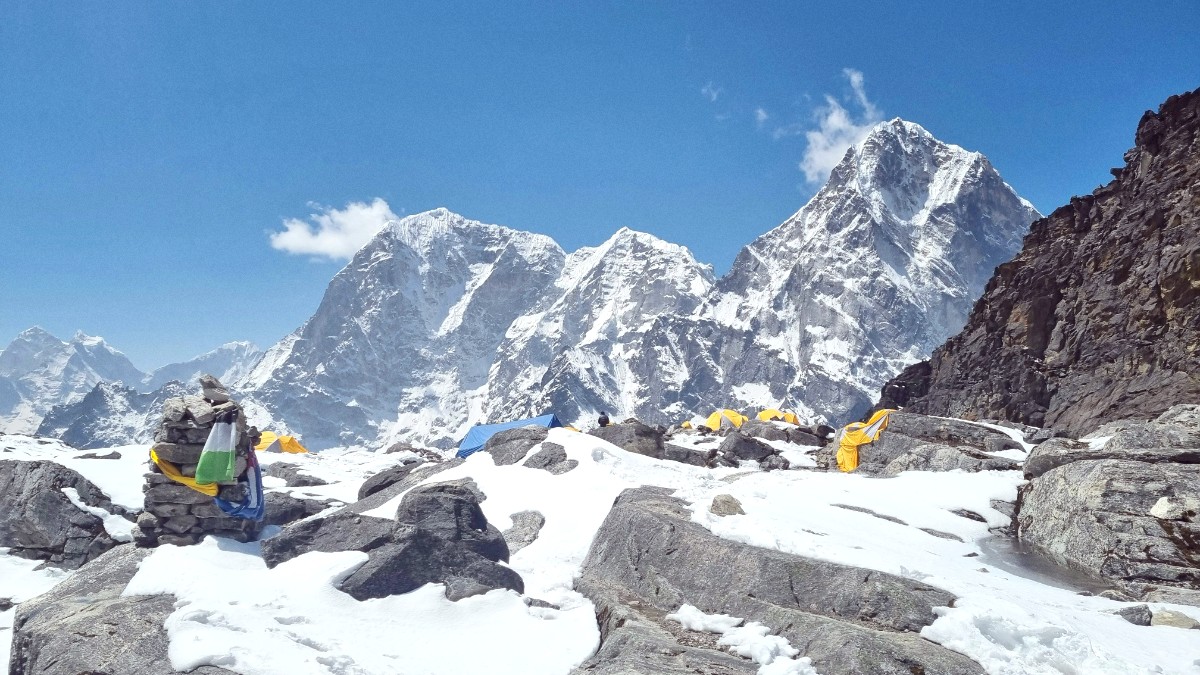
Nepal
The Everest Base Camp (EBC) trek unfolds within the Khumbu (Everest) region of Nepal. This specific area stands within the greater Himalayan range, globally recognized as the planet's highest mountain system. The trek officially commences from Lukla, a small town with an airfield positioned precariously on a mountainside. From Lukla, the trail winds its way along the Dudh Koshi river valley, a path carved by glacial meltwater. This river, whose name signifies "Milk River" due to its milky-white appearance from glacial silt, directs trekkers through a series of charming Sherpa villages.
Your journey traverses through Phakding, then ascends steeply to Namche Bazaar, known as the Sherpa capital and a central hub. Beyond Namche, the landscape transitions to alpine settings. Pass through Tengboche, a site of a prominent Buddhist monastery, and continue upwards to villages like Dingboche, Lobuche, and Gorak Shep. Each village offers basic teahouse accommodation and chances for altitude adaptation.
The trek reaches its highest point at Everest Base Camp, at 5,364 meters (17,598 feet). Mount Everest itself is not directly visible here due to the Lhotse-Nuptse wall. However, the sweeping vista of Everest, Nuptse, Lhotse, and Ama Dablam appears from Kala Patthar. This viewpoint, at 5,550 meters (18,209 feet), gives the most iconic views of the world's tallest mountain.
The Everest region is a deep historical significance, woven into the life of the Sherpa people and mountaineering history. This terrain is not merely towering peaks; it is a homeland, a spiritual sanctuary, and a setting for human endeavor. The Sherpas, an ethnic group migrating from Tibet centuries ago, have made this rugged landscape their own. Their villages, situated along the trekking path, are centuries old, constructed from stone and timber, mirroring generations of adaptation to high-altitude existence. Their unique culture, shaped by Tibetan Buddhism, permeates the region, visible in the numerous monasteries, chortens (Buddhist stupas), mani walls (stone tablets carved with sacred texts), and prayer flags that adorn the trails and mountain passes. Their profound reverence for the mountains, seen as sacred dwellings of deities, shapes their way of life and their approach to climbing.
The region gained global recognition with the first successful ascent of Mount Everest on May 29, 1953. Sir Edmund Hillary from New Zealand and Tenzing Norgay Sherpa of Nepal became the first confirmed individuals to reach the summit. Their achievement not only marked a pivotal moment in human exploration but also directed international focus towards the Everest region and the incredible abilities of the Sherpa people. This event changed the perception of the Himalayas from an impenetrable wilderness to a realm that, while still formidable, became open to exploration. Initial expeditions faced immense logistical and technical hurdles, often relying on basic gear and pure resolve. The accounts of these early climbers, and the Sherpas who supported them, remain central to the region's appeal.
Sir Edmund Hillary and Tenzing Norgay Sherpa reach the peak.
Conservation efforts begin in the region.
Park recognized for its ecological and cultural importance.
Trails served as links between Nepal and Tibet for centuries.
Routes used by devout Buddhists visiting sacred sites.
Following the initial ascent, the region witnessed an increase in expedition activity and, eventually, a rise in trekking tourism. Acknowledging the area's unique natural and cultural heritage, Sagarmatha National Park was formed in 1976. The park later gained UNESCO World Heritage Site status in 1979, further cementing its global significance. This designation safeguards its glaciers, high-altitude forests, and the traditional Sherpa villages, maintaining a balance between tourism and conservation.
The trails themselves feature a mix of well-trodden paths, rocky sections, and sometimes icy stretches at higher elevations. The path can be narrow in places, with steep drop-offs, notably above Namche Bazaar. You will share the trails with local Sherpas, porters, and lines of yaks and zopkios (yak-cow hybrids) transporting supplies to the higher villages.
The trek journey involves vast glaciers, moraine fields, and towering rock faces, all contributing to the formidable and awe-inspiring scenery. The ever-present sound of glacial rivers, alongside the distant rumble of avalanches, reminds you of the dynamic natural forces at play in this mountain kingdom. This understanding of the physical environment underlines the necessity for careful planning and reverence for nature's power.
The air becomes thinner as you ascend, requiring a measured pace and proper altitude adjustment. The presence of numerous suspension bridges, adorned with prayer flags, crossing the Dudh Koshi river and its tributaries, is a defining feature of the early parts of the trek, adding to the adventurous feel of the journey.
A swift review of the Everest Base Camp trek offers a clear understanding of what awaits you on this high-altitude expedition.
The main activity of this journey is high-altitude trekking. You will walk daily through diverse landscapes, slowly ascending to reach Everest Base Camp and then climbing to the viewpoint of Kala Patthar. The journey emphasizes sustained physical effort at increasing elevations, demanding resilience and a steady rhythm. This is not a technical ascent, but rather a demanding walk through rugged mountain terrain.
12-14 days (Kathmandu to Kathmandu)
Kala Patthar (5,550m / 18,209ft)
Lukla (2,860m / 9,383ft)
The Everest Base Camp trek ranks as moderate to challenging. The "moderate" aspect comes from walking on well-defined trails, with no technical climbing or ropes needed. The "challenging" aspect mainly originates from the high altitude. As you ascend, the air becomes thinner, lessening oxygen availability. This makes walking more physically taxing and heightens the risk of altitude sickness. Daily walking hours span 4 to 8 hours, involving steady uphill climbs and descents. Prior trekking experience is a bonus, but good physical fitness and a positive mental attitude possess greater weight.